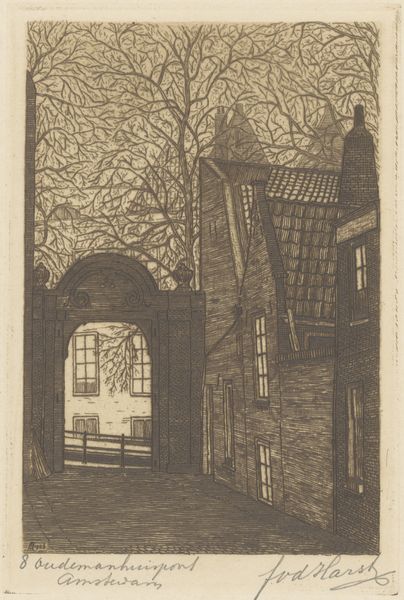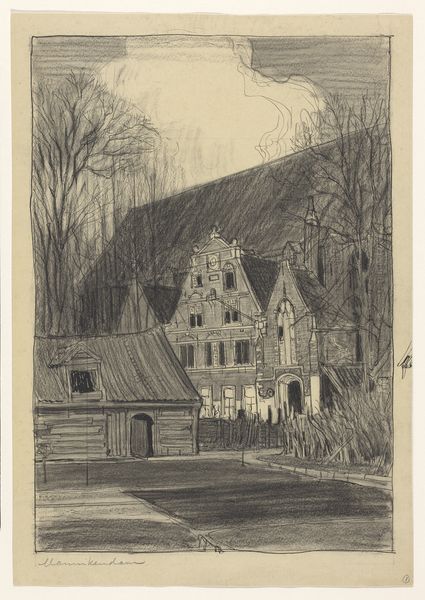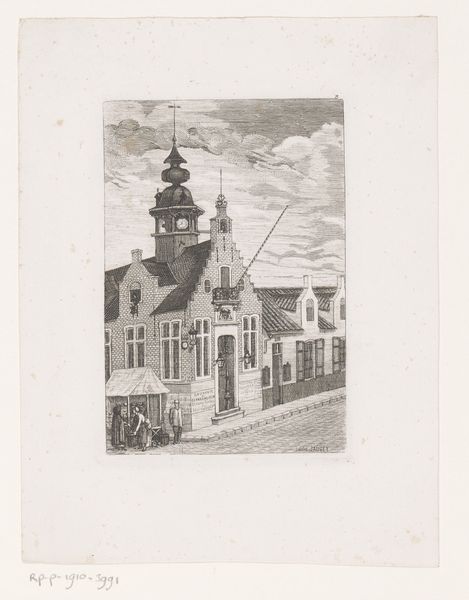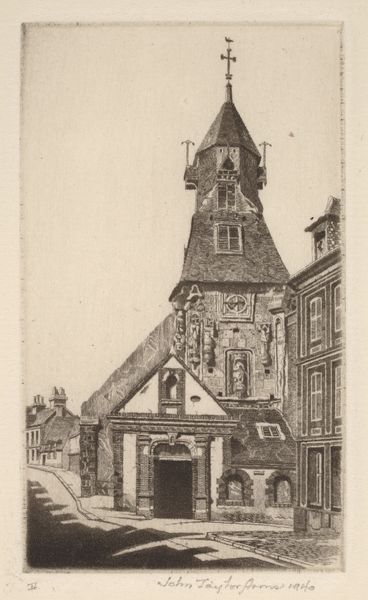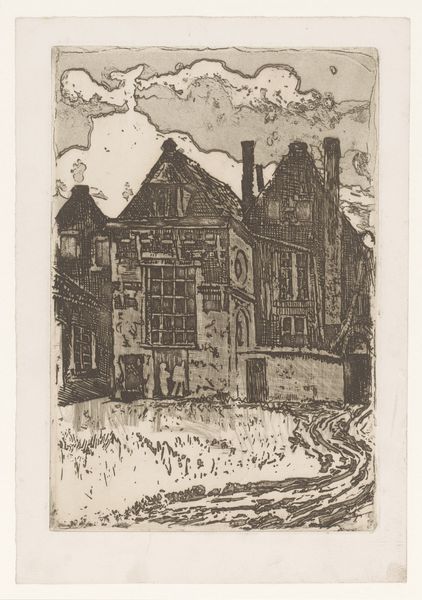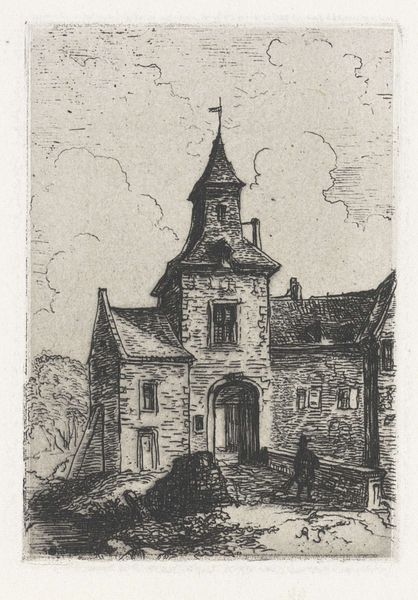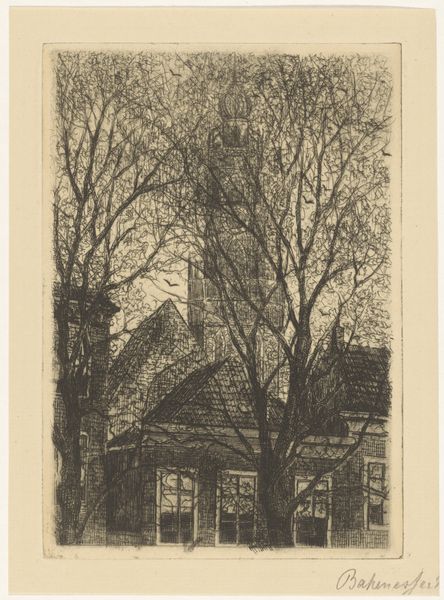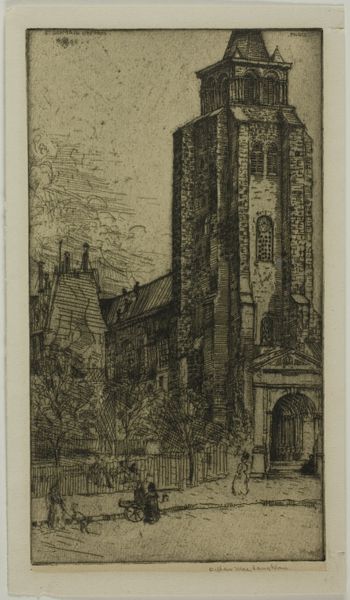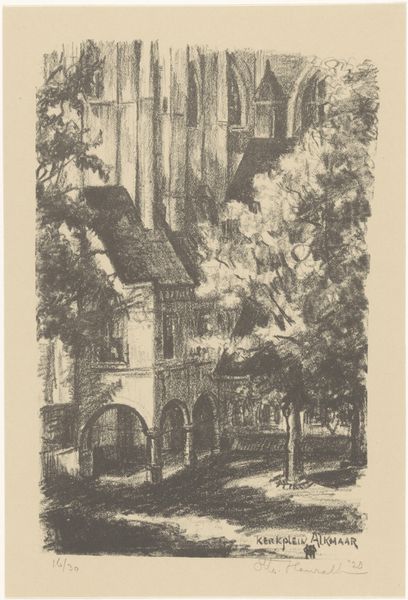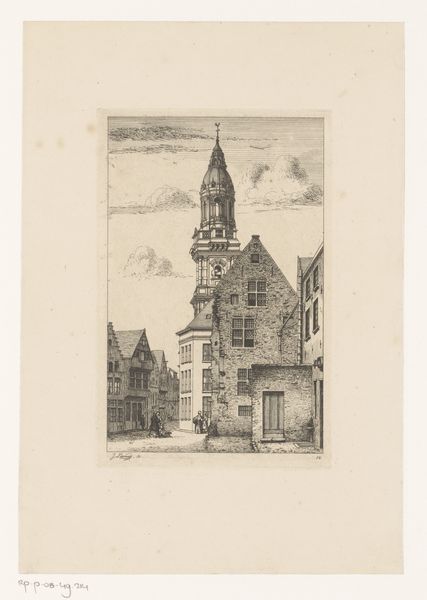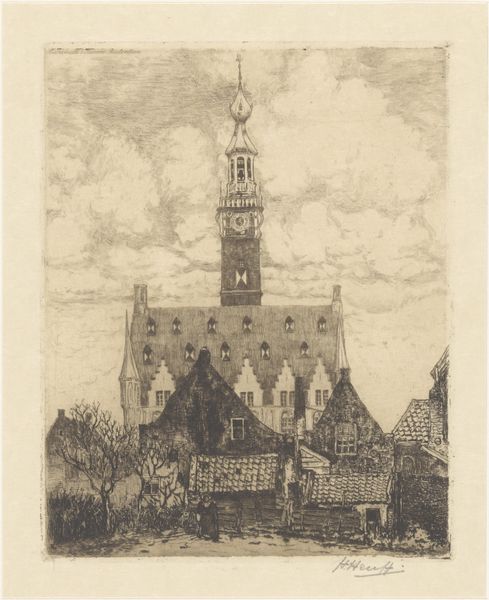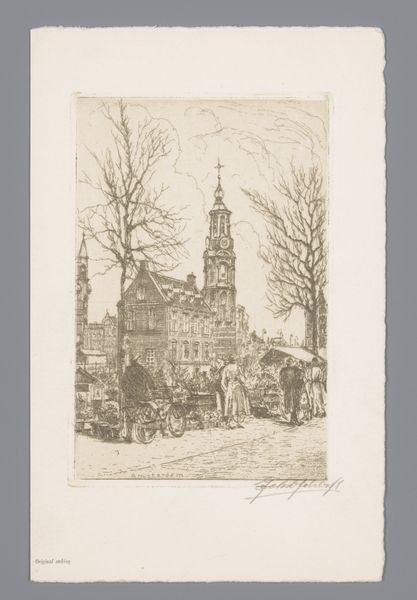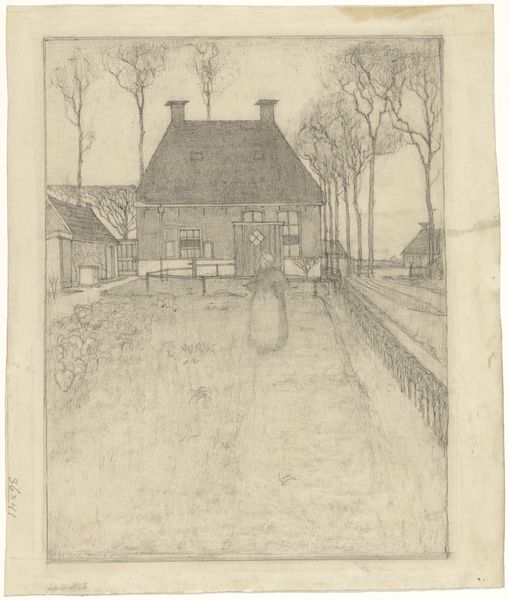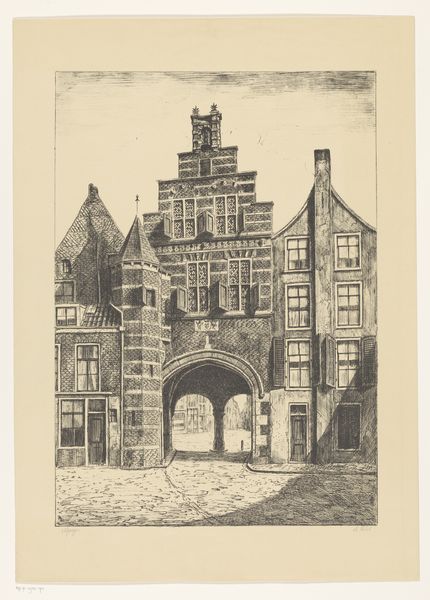
drawing, print, etching, ink
#
drawing
#
dutch-golden-age
# print
#
etching
#
landscape
#
etching
#
ink
#
line
#
cityscape
#
realism
Dimensions: height 350 mm, width 250 mm
Copyright: Rijks Museum: Open Domain
Editor: This is "Waterpoort te Tiel," an etching and ink drawing made sometime between 1886 and 1938 by Anton Vincent Emanuel Pohl. There’s a wonderfully old-world feeling, like stepping back in time, but something about the stark lines also feels quite modern. What do you see in it? Curator: I see the weight of history, not just in the depiction of this city gate, but also in how the work participates in the history of printmaking and its role in shaping the public imagination. Editor: How so? Curator: Prints like this made art accessible. Think about it: before photography, how else would people see different parts of the world? This image helped define Dutch identity by showing its unique landscape. How might this cityscape be promoting certain values? Editor: Perhaps it showcases the industriousness and order of Dutch society through the structured architecture? I guess prints would become potent tools for constructing national identity and civic pride! Curator: Exactly! This work, seemingly just a picture of a city gate, also played a role in larger social and political narratives. Editor: It’s fascinating how one image could have so many layers! It makes me think about the responsibility that artists bear, even when they think they are just creating something pretty. Curator: Precisely! The history of art isn’t just about artists expressing themselves; it's about power, representation, and the continuous dialogue between art and society.
Comments
No comments
Be the first to comment and join the conversation on the ultimate creative platform.
